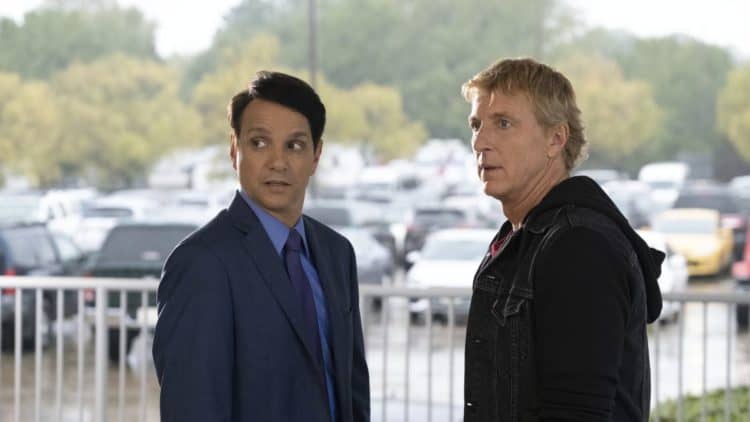
With the news that YouTube Originals is folding, you may actually be surprised to know that YouTube ever had an original programming platform in the first place. Since its revelatory founding and launch way back in pre-social media 2005, YouTube has always (for the most part) been a platform for independent creators and those wanting to create vlogs to thrive within their very own entertainment/information space. Fictionalized films, TV series, and even documentaries were never part of the YouTube creator experience unless you wanted to face copyright issues by uploading such things. Back in 2015 when YouTube Red launched, now known as YouTube Premium, the aspect of producing original programming was also slowly rolled out in tandem with a no-advertising option, but the originals rolled out never truly caught on, and there are a myriad of reasons why this likely happened. The video platform monolith struck gold with Cobra Kai when it launched in the spring of 2018, but it couldn’t even manage to maintain that phenomenon, even with millions upon millions of views recorded. Additionally, such original titles like Broke, 12 Deadly Days and a slew of reality-based programming simply couldn’t hold an audience to support the production and advertising costs. So why did what appeared to be a great idea ultimately fail?
Lack of Vision and Variety
YouTube Originals was originally advertised to be a mixture between green-lit films and series in addition to exclusive, original programming with expensive production values for some of the platform’s most popular independent creators. As a means of promoting popular creators, the move was completely pointless since creators such as PewDiePie, Michael Stevens, and others were already tremendously successful in their own right. A bulk of the scripted originals were fairly obscure and did not feature many of the promotional gimmicks or superb advertising that leads other such series to catch on, such as those on Netflix, Amazon Prime, etc. There was in fact a great deal of variety amongst the originals that aired across the platform, but when the series you are producing manage to blend in aesthetically with endless other independent series from creators on the platform, it becomes a case of…how and why is this any different? It cannot be blamed on the lack of funds to adequately produce original programming, either scripted or reality. YouTube is after all owned and operated by Google, so the only clear reason is an overall lack of creative vision. The funding was always there, but unfortunately, a strong executive in charge of greenlighting original programming simply wasn’t. Well, apart from Cobra Kai that is, but more on that in a bit.
Poor Marketing
One of the most attractive aspects of YouTube Premium is and always will be the ability to stream content endlessly (at least for a month at a time) without commercial interruption. Independent creators still benefit from monetization, which is driven by a view-to-subscriber ratio, even though ads can be more lucrative. One of the biggest mistakes of YouTube Originals was to bundle it with this godsend of a perk. First and foremost, anybody who signs up for YouTube Premium and shells out in excess of $10 per month to watch content without ads–it is going to be very hard to sell the other perks apart from the ad-free watching. This is simply because YouTube is YouTube; it’s not immediately identifiable to viewers as an alternative or supplement to Netflix or Disney+ etc. People go to YouTube to watch anything and everything in terms of clips, nostalgic content, music videos, audio-only songs, and content by a seemingly endless supply of creators, both good and cringe, any time of the day for as long as they like. This is how it’s been since 2005, and any attempt to change that–and we all know YouTube has taken a hacksaw to their platform more than once–is going to fail. There are numerous people who simply have an internet subscription and then a YouTube account, and that’s it–and it can be said that perhaps YouTube Originals was a way to ensure YouTube addicts and cord-cutters would have even more incentive to stay connected, but the brand never succeded at marketing it’s original programming in an effective way—mostly because independent creators have always been YouTube’s original programming…
Letting Go of Cobra Kai
When Cobra Kai landed on YouTube Red in May 2018, it was an instant hit. It was unique to be able to go to each episode and see exactly how many viewers an episode was getting, and each ep was netting millions of views as the months went on. At that time, it would be hard to find any commentator doubting the potential of YouTube Originals thanks to what has got to be the single greatest revival of an iconic franchise in recent pop culture history. Cobra Kai’s success would likely have any up-and-coming streaming platform clamoring to harness more original programming potential, but YouTube never took off and ran thanks to this show’s massive success. It’s utterly confusing. In fact, during the summer of 2020, as season 3 was forming, YouTube Premium (renaming the service never helped either) decided to sell YouTube Originals’ flagship original to Netflix. Granted, the network change has taken Cobra Kai from the stratosphere to the mesosphere, but still, what the ever-loving hell YouTube? This was basically tantamount to saying, we know our other originals are subpar, so we want to move Cobra Kai away from them to a more superior place in which it belongs–a rival streaming platform?
Identity Crisis
Ultimately, and perhaps the main reason that YouTube Originals failed was the result of a major identity crisis. After the Cobra Kai sale, YouTube Premium announced that its originals section would focus exclusively on boosting specialized content from popular independent creators. And again, what was the point of this? Independent creators are and always will be YouTube–they do not need a paywall section to maintain their influence, most already have Patreon anyway for exclusives. It was okay while it lasted.instant hit
 Follow Us
Follow Us





